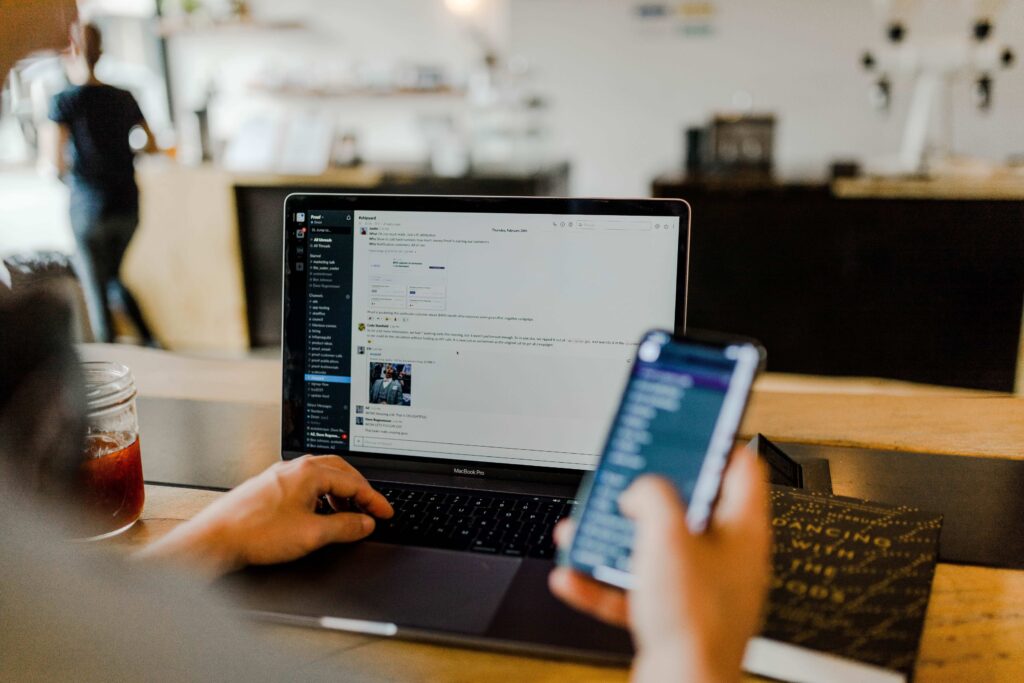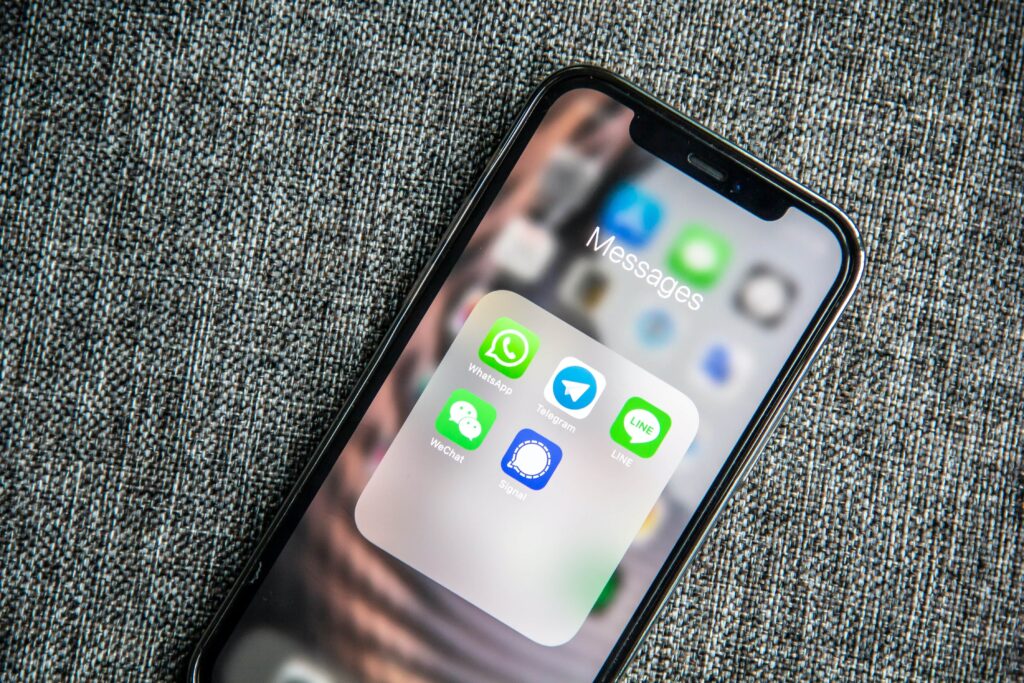Automating internal communications becomes really important for tour operators because so many serious (and potentially fatal) things can go wrong that you need to be able to get the word out ASAP. Alternatively, internal communications is wrought with endless back-and-forth, countless steps, and never-ending to-dos.
It kind of feels like once you get one thing done, another thing pops up. Forever.
In this post, we’re going to cover what internal communication is, why you should automate internal communications, and how you can streamline those tasks.
Table of Contents
What Is Internal Communications For Tour Operators?
Why Should You Automate Internal Communications?
How Can You Start Streamlining Internal Communications?

What Is Internal Communications For Tour Operators?
“Internal communications” means the exchange of information, messages, and feedback within a tour operator’s organization. It’s the methods and strategies used to communicate and collaborate with everyone in the company.
Examples of internal communications are:
- Scheduling and Shift Management
- Availability and Booking Updates
- Communication with Remote Teams
- Emergency Communication
- Updating Marketing Materials
- Guest Feedback Processing
- Equipment Maintenance Coordination
- Training and Onboarding
- Inventory Management
- Team Collaboration
We’ll cover how you can automate these different tasks so you can make communicating and collaborating with your team easier.

Why Should You Automate Internal Communications?
The truth of the matter is that there’s only so much time in the day to onboarding, train, and schedule guides, update bookings and marketing materials, and build a cohesive team, plus doing everything outside of the company. Certain tasks are prioritized, while others fall to the wayside.
Sure, it’s nearly impossible to get everything done in one day but what happens is those tasks that are de-prioritized are also important for your tour company to grow and those are the “softer” tasks that make a big difference in the long run.
Effective internal communication for tour operators is crucial for several reasons:
To Coordinate Operations
Tour operators often have different teams that need to work together seamlessly, including tour guides, reservations, marketing, customer service, and operations. Of course, the smaller the tour company, the fewer the teams and more tasks on just a couple of people.
When you have a strong internal communication system, it helps get everyone on the same page and working in sync to deliver a positive customer experience (and grow your business).
To Engage Staff
Staff who are excited to show up every day are more likely to provide excellent customer service, work with everyone else at the company, and contribute to the success of the business.
Internal communication increases positive engagement by keeping employees informed about the company’s goals, values, progress—and even shortcomings. When you create a company built on open and clear communication, this will positively impact the people who work for you.
To Increase Efficiency and Productivity
Clear communication streamlines processes like guide scheduling. When you know your guide’s availability and skills, you can schedule them for the right tours.
Clear communication also reduces errors. Knowing your guide’s schedule ensures you don’t schedule them when they’re unavailable or double-booking them because their calendar wasn’t clear.
Internal communications, therefore, lead to increased efficiency and productivity and will make your customers happier too.
To Problem-Solve Quickly
Effective internal communication helps tour operators quickly identify and resolve issues, whether it’s customer complaints, equipment problems, or staff scheduling conflicts.
This is because you have a streamlined way of communicating when clients have issues, when equipment isn’t working properly, or a guide is unavailable.
To Train and Onboard
Tour operators have to onboard new guides and provide ongoing training to protect everyone involved on the tour. There’s way too much to learn when starting as a tour guide with a new company to leave it to disorganization.
When you have proper internal communication, this ensures that your employees have access to (up-to-date) training materials and that you can easily monitor their progress so you can help them if they’re struggling.
To Collect Feedback and Improve
Collecting and sharing feedback from customers and staff is essential for making improvements within the company and optimizing tour experiences for guests. Gathering this information manually takes too much time and isn’t productive at all.
Instead, when you automate internal communication processes, you’ll collect feedback quicker and you’ll be able to implement it faster too. This builds trust not just with clients, but with your staff too.
To Solidify Company Culture
Internal communication plays a significant role in promoting a positive company culture, aligning employees with the organization’s mission and values, and ensuring that everyone is working toward common goals.
By giving your staff clear steps to grow in their positions, provide feedback, get training, and understand what your company stands for, you’ll create a strong and positive company culture.

How Can You Start Streamlining Internal Communications?
Scheduling and Shift Management
Coordinating the schedules of tour guides, drivers, and other staff can be a complex and time-consuming task, especially if it involves last-minute changes or handling part-time and seasonal employees.
Platforms For Scheduling
We wrote an entire post about how to automate tour guide and staff scheduling which covers different platforms you can use to automate scheduling within your business.
Some of these include Square Appointments, Calendly, and Appointy to manage schedules and ADP Workforce Now, Paylocity, and Oracle PeopleSoft to manage your workforce.
Another option is using Origin to manage your guides’ schedules alongside your tours. That way you never have to worry about double-booking or canceling last-minute.
Availability and Booking Updates
Keeping availability and booking information up-to-date can be a challenge if you’re managing reservations and responding to booking inquiries manually. Knowing what dates, guides, and equipment are available, answering customer inquiries via phone or email, and staying informed of weather in case you have to cancel a trip.
Booking Software
Doing all of this by hand risks missing something, which causes your customers to distrust your company if they’re the ones who get the short end of the stick. Not just that, but the mismanagement of bookings will irritate your guides and staff—something that leads to a toxic work environment.
This is where many tour operators find booking software to automate the reservation process for them, like Origin. That way, there’s less of a chance of missing pertinent information.
Communication With Remote Teams
Tour operators often have guides or staff working at various locations, and ensuring effective communication with these remote teams can take extra time and effort, especially if service is spotty.
Guide Calendars
An easier way around internally communicating with your remote teams is giving them their own calendars to update. This way, you’re not playing phone tag trying to see if they can take a trip. You can make it so they’re automatically assigned so long as they’re available through Origin. This improves internal communication because no one’s waiting and wondering if they’re assigned to a trip or if you have an available guide to lead a new reservation.
Emergency Communication
In the event of unforeseen circumstances, such as weather-related cancellations or other emergencies, ensuring you notify all staff and customers as soon as possible is challenging.
Email Marketing Platforms
Using an email marketing platform with pre-written emails can help streamline internal communications among your staff and customers. That way, if you need to cancel a trip because of weather, you can quickly create it and send it to your guests without having to write a new one every time.
Origin
In Origin, you can cancel trips with a push of a button while also letting your customers know why it’s getting canceled and how they can reschedule with you. This helps when time is short and your people need to know what’s going on.
Updating Marketing Materials
Keeping brochures, websites, and marketing materials current with accurate tour information can be time-consuming, especially for businesses offering a wide range of tours.
Canva
One tip is to always have an editable digital copy of your marketing materials so anyone (with permission) can access and update them. You can even use freemium tools like Canva and give your staff editing permissions so everyone can contribute to keeping materials up-to-date.
Asana
Tools like Asana help you manage projects and tasks, which can help you stay on top of updating your marketing materials as well. Set due dates for when you’d like to revisit your promotional goods and expect an email reminding you to get that task done.
Guest Feedback Processing
You know you need reviews. You know you need to ask for them. But you don’t know how to do that without it being a giant headache.
Gathering and processing customer feedback and reviews can be a time-consuming process, especially if it involves manual data entry and extensive analysis.
Email Marketing
You want to make it incredibly easy for your guests to leave reviews while also streamlining the review process for you and your staff. Again, you want to use your email marketing platform to create automated emails requesting for reviews on their trip.
It gets complicated if you want reviews for specific trips and specific guides when using a general email marketing platform though. You’ll need to make “rules” to attach customers to previous trips and for someone who is tech-adverse, it might not be the most fun thing to do.
Origin
You could also use Origin to request and gather reviews because we streamline the entire process for you. Origin’s automated messaging requests reviews from past customers using their registered contact information. The system texts or email your guests with a one-click review link for their trip and guide.
You won’t have to do anything other than provide the best experience possible.
Equipment Maintenance Coordination
Coordinating maintenance and repair work for tour equipment, vehicles, and gear can be a logistical challenge, potentially leading to communication delays and even tour cancellations. Additionally, ensuring an accurate count of tour equipment, such as kayaks, bicycles, or hiking gear, can be a demanding and time-consuming task if done manually. You’re relying on customers, managers, technicians, and suppliers to make sure your equipment is accounted for and stays up and running.
And if you don’t stay on top of that, it can lead to serious risks and injuries, so it’s imperative to have an automated internal communication process detailing who’s in charge of equipment maintenance.
In small teams, it seems like everyone has to be on top of equipment checks, but if there isn’t an actual process, things will get missed.
To Do Apps
Consider apps you already use for to-do lists. Ones that will keep you accountable and remind you of maintenance work. Previously, we recommended Asana and we’re going to recommend it again because it can remind you to check your gear routinely to ensure nothing’s about to snap.
If you don’t want to download another app, there are apps on your phone to track maintenance schedules too. And when you need to schedule downtime for gear, equipment, and vehicles, you can do that in Origin.
Training and Onboarding
The training and onboarding of new tour guides or staff can be time-consuming, especially if you don’t have a standardized and streamlined process. Relying on manual training and onboarding leaves room for errors and missing important information. Of course, there’s nothing close to on-the-job training and a guide needs real-life training—not reading from a booking—so there’s a fine line between manual and automated onboarding.
When you streamline internal communications, like training and onboarding, you improve accuracy and consistency. You can streamline crucial tasks like background checks and drug tests on new employees, and reference checks so you can spend your time teaching them the ropes.
Here are some employee onboarding apps that can be beneficial for small tour guiding businesses:
BambooHR
BambooHR has a user-friendly onboarding module that allows small businesses to create customized onboarding workflows, track employee progress, and ensure that staff completes their paperwork.
WorkBright
WorkBright is a mobile onboarding app that helps employees complete paperwork digitally. It is especially useful for remote or field-based employees, making it suitable for tour guides who may not be office-based.
Zenefits
Zenefits provides an all-in-one HR solution, including onboarding, benefits administration, and payroll. It’s user-friendly and can be beneficial for small businesses with limited HR resources.
Cross-Team Collaboration
According to Teamwork, “Cross-team collaboration, also known as cross-functional team collaboration, refers to a collection of different groups who all efficiently work together toward a common goal.”
Depending on the size of your company and the tours you guide, there may be different teams within your organization. Getting them on the same page and working together will be key to your business growth. Staff dedicated to business development will have different thoughts, opinions, and insights than a guide who is in the field most of the time.
An example of cross-team collaboration is having your guides tell your office staff if there’s a popular tour or if customers complain a lot about an aspect of a tour. Knowing this, your office staff can be prepared to answer questions or complaints before customers get too angry.
On the other hand, the staff in charge of marketing can advertise the more popular tours while you and your staff work together to improve the tours that aren’t a fan-favorite. You can improve your cross-team collaboration by using internal communication apps like Slack, Microsoft Teams, and Discord.

Conclusion
Internal communication methods for tour operators can include emails, team meetings, communication apps, intranet systems, messaging platforms, and various tools and software designed to streamline scheduling, bookings, and other tour-related tasks.
The specific strategies and tools used can vary depending on the size and structure of your tour operator business, but the goal remains the same: Ensure that the internal communications of your company are efficient, effective, and focused on delivering exceptional tour experiences.







